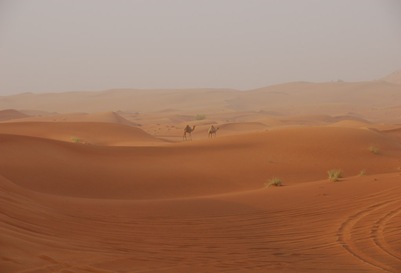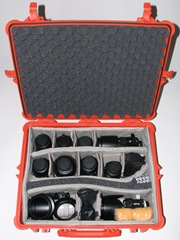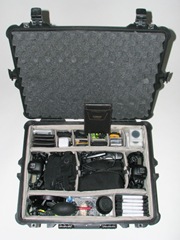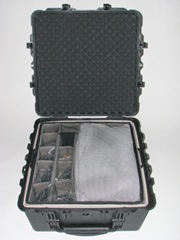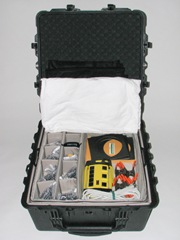If you've followed my blog you know that I am a huge fan of Bryan Peterson books. To me he is both an awesome photographer and great teacher. His latest book called Understanding Shutter Speed: Creative Action and Low-Light Photography Beyond 1/125 Second concerned me at first because I was afraid that it was going to be one of those "no duh" books. After all, once you understand the concepts of shutter speed, there hardly seems to be enough to write a whole book! My fear was that this was Bryan's attempt to capitalize on his success and help to pay the bills by exploiting his faithful followers, but I'm pleased to say that doesn't seem to be the case.
Like all of Bryan's books, he mixes a little bit of the topic at hand with great stories and images from his successful pictures which serve to inspire you and ignite your creativity. He includes useful exercise tips that help to inspire you to think out of the box and really understand the concept he is presenting. Unfortunately does recycle some shots and stuff from previous books (probably more than any of his others). Having read all of these books back to back I would have preferred to have seen less shots of his wife and kids (which to be fair, I’m guilty of myself) and more different subjects. Gripes aside, this book still has the winning formula of his other books and is still well worth a read.
As I did in my Beyond Portraiture review, I'll now discuss the major sections of this book to help you understand my takeaways from each part of the book.
Shutter Speed: Facts & Myths
This is a pretty basic chapter that all but the most beginner photographers will generally say "no duh" too. This of course will turn some readers off causing them to tune out and stop reading this book. However, like all of Bryan's books, there are plenty of nuggets to be discovered by reading from cover to cover and this book is no different. Read this and you'll pick up a few little things, but continue on in this book and you'll learn much more.
Fast & Moderate Speeds
This chapter begins with a really cool picture that Bryan later admits is one of his few Photoshopped pictures. It then starts going into some good practical advice on what shutter speeds are best for various situations (i.e., motor sports, water sports, people, rain, etc...). To a large extent, this is one of the most useful chapters, because even if you are like me and have discovered much of this through trial and error, you'll pick up plenty of little tidbits to help you get better shots than you currently are getting today. It also helps to confirm the lessons you may have already learned in the school of hard knocks, so it frees you to focus on other things that might be lacking when shooting at these various key shutter speeds.
Slow Speeds
I'll be the first to admit that the only types of photos that Bryan takes that I don't like (and in fact, I hate) are his slow shutter speed shots. I'm still in that phase of being enamored with sharpness, so I hate his blurry out of focus shots which personally I'd delete if they were on my camera. As a result, I find a lot of his advice to be off by my standard especially when it comes to panning (which is one of my specialties). I think a panning shot should look something like this:

where you have a crisp, sharp image with a motion blur in the background. Bryan's shots are totally blurry with sometimes even camera shake being visible (oh, the horror :-). He of course explains that this is intentional and talks about how it goes against the mainstream (and in one instance even points out that his family wasn't too fond of him choosing this format for their family ski trip).
However, the good news is that he moves on to "painting with shutter speed" where he shows some outstanding things he's done with slower shutter speeds that make an abstract art hater like myself even pause and go "wow".
Things get even better when he starts demonstrating zooming techniques, and my favorite - attaching the camera using the Bogen Magic Arm or Super Clamp to get some really awesome shots! This is where I really started to love this book, and it finishes off with a really cool topic of photographing ghosts. I was jazzed after reading this chapter and finally felt that this book was really very cool.
Exposure Concerns
This chapter focuses on some of the challenges you face when using various shutter speeds - especially long exposures. It goes into things you can due with neutral density filters to overcome some of these exposure challenges. Lastly, this section goes into the benefit of shooting raw (i.e., +/- 2 stop exposure compensation) which isn't possible with other formats. This feature made Bryan a huge fan of the digital raw format, but it is something that most raw users already take for granted.
Composition
This chapter is a tried and true series of suggestions that are very similar to many of Bryan's other books, but this guy is a master so it is always enjoyable to read his suggestions. In fact, this stuff is updated a bit from his other books (as this is his newest book) so some of it will cover topics not discussed in other books (i.e., leaving room for action).
Other Reading
Here's some links to other great Bryan Peterson books on this blog:
Conclusion
Skill Level: Beginner to Intermediate
Value: Very good
Recommendation: Highly recommended. While this is probably not in the top 3 of Bryan's books that I'd mention when recommending his books, it is still a great book. For those just getting started, I still suggest that you start with Learning to See Creatively and then move on to Understanding Exposure before reading this one. However, this is still a great book and definitely a good resource for those shooting sports.
Support this blog by purchasing this book here.
NOTE: This site requires cookies and uses affiliate linking to sites that use cookies.
. Either way, your support is greatly appreciated!
This blog is intended for freelance writing and sharing of opinions and is not a representative of any of the companies whose links are provided on this site.
The opinions provided are of Ron Martinsen alone and do not reflect the view of any other entity


